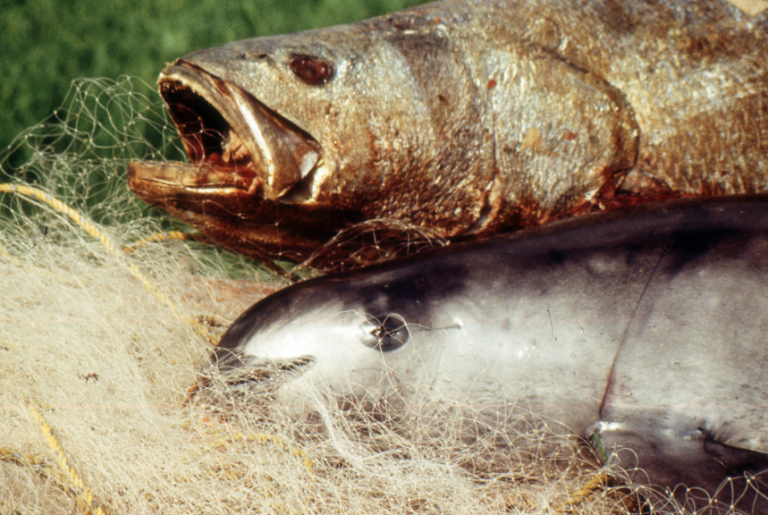The vaquita, also known as vaquita marina and Gulf of California porpoise, is the world’s smallest porpoise and probably the smallest cetacean, no more than 150 cm long. With its dark gray back and light belly, its most visible characteristics are the black rings around the eyes and mouth.
It is probably the most endangered species of marine mammal on the planet. It is found only in the Sea of Cortez, or Gulf of California, on the western side of Mexico. The species is classified as “critically endangered” by the International Union for Conservation of Nature and Natural Resources (IUCN) Red List as well as by CITES (Convention on International Trade in Endangered Species of Wild Fauna and Flora) and by the government of Mexico.
Genetic studies have shown that the Gulf of California porpoise, or vaquita, is a naturally small population. It is also the only species of marine mammal endemic to Mexico. Because there are so few, the vaquita was unknown to scientists until the second half of the last century.

The primary threat to the vaquita is being caught accidentally in fishing nets, especially gillnets, that target other species like sharks, rays and shrimp. Studies estimate that 40 to 80 vaquitas die in nets each year, more than are born.
The species has fallen from about 600 individuals in 1997 to 150 in 2007, a drop of 70% in one decade.
What is the Mexican government doing to save the vaquita?
To preserve the vaquita, the government of Mexico has set aside a fund for the conservation of the species. It has enabled:
– the creation of a reserve where gillnets are forbidden;
– support for fishers who are willing to change their activities, their practices or their fishing equipment.
The Cousteau Society is working as a partner with a Mexican scientific team.
Vaquitas emit a high-frequency sound that can be distinguished from other biological acoustic signals. This makes it possible to use acoustic detectors conceived specifically for the species. The idea is to put in place an autonomous network of hydrophones that could collect data continuously for weeks or even months. This would let researchers track the abundance of the population and its movements, which is essential for any conservation plan to evaluate progress and predict the success or failure of a given action.
Such an acoustic network is the most effective and most economical approach and, in the end, entails the least disturbance for the already fragile vaquita population.
Saving and protecting marine life for present and future generations since 1973
©2024 The Cousteau Society.
All rights reserved.